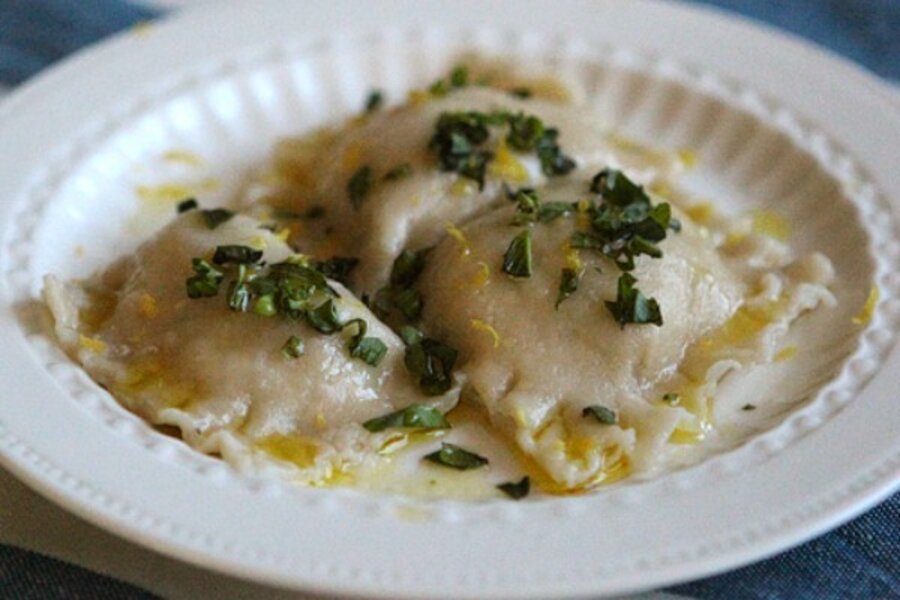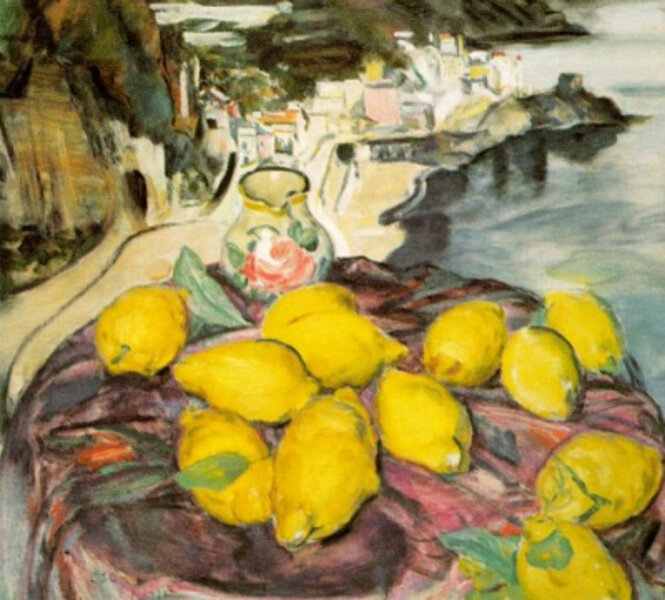Ravioli caprese
Loading...
Classified as a filled pasta, ravioli dates back to the 14th century from the writings of Francesco di Marco (1). The word ravioli is similar to the Italian verb "to wrap," riavvolgere, although it is not a derivative. Traditionally, pasta dough is rolled out as thinly as possible and then wrapped around a filling. Italian-Americans pioneered the canned style, often beef in a tomato or tomato-cheese sauce.
Growing up as a Midwesterner, the dish was synonymous with the purveyors of the canned variety – Chef Boyardee, an Ohio company dating back to 1924. This recipe offers large ravioli, with three to four equating to a generous dinner. The olive oil, lemon and fresh basil keep the dish light, otherwise the filling pasta becomes a stodgy meal – much like it’s canned counterpart.
István Csók was a Hungarian artist who worked all over Europe in the late 19th and early 20th century. Stylistically, he combined the Naturalism and Impressionism of the French after studying in Paris in the 1880s. Amalfi was painted later in Csók’s career the same year he held the solo exhibition Fränkel Salon in Budapest. He is one of the select few non-Italian artists who have a self-portrait hanging in the prestigious Uffizi Gallery in Florence (2). Allegedly, Csók also claimed a position within pop culture history through the 1971 film Countess Dracula where his 1896 painting of the Countess Elizabeth Bathory torturing young women can be spotted in the opening credits.
Ravioli Caprese
adapted from the Food Network
Dough:
2-1/2 cups flour
1-1/2 cups hot water
Filling:
3/4 cup ricotta
1 egg
Shredded chicken from 1 quarter rotisserie chicken
1/4 cup Parmesan, grated
2 tablespoon fresh basil, chopped
1/2 teaspoon salt
1/4 teaspoon black pepper
Sauce:
3 tablespoons olive oil
3 tablespoons fresh basil, chopped
2 teaspoons lemon zest
1/2 teaspoon salt
1/4 teaspoon black pepper
In a large bowl, combine the flour and water and stir until a large ball forms. Cover with plastic and let sit for 10 minutes.
Meanwhile, combine all of the filling ingredients in another bowl. Stir well and set aside. Divide the dough into four pieces. Flour your work surface and begin to roll out the dough into a long narrow strip, as thin as possible without creating any holes. Once rolled out, spoon 1 tablespoon sized portions of the filling one inch apart down the strip of dough. Fold the dough over the filling and press around it to seal it in the pocket. Cut each individual ravioli from the dough and use a fork to crimp the edges.
Bring a large pot to a boil (but not a hard rolling boil) and carefully slide each ravioli into salted water. Cook for 3 to 4 minutes until the ravioli floats. Remove from the water with a slotted spoon and place in a large bowl. While still hot, toss with the olive oil, fresh basil and lemon zest. Top with salt and pepper and serve immediately.
Related post: Baked Risotto with a Walnut Parmesan Crust






